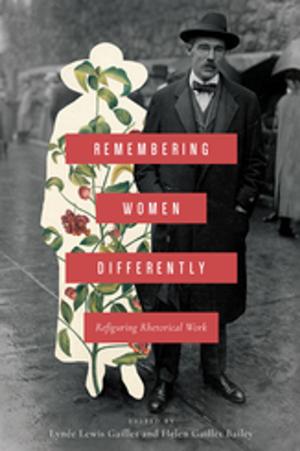Bathsheba Survives
Nonfiction, Religion & Spirituality, Bible & Bible Studies, Old Testament, Biographies| Author: | Sara M. Koenig, James L. Crenshaw | ISBN: | 9781611179149 |
| Publisher: | University of South Carolina Press | Publication: | November 15, 2018 |
| Imprint: | University of South Carolina Press | Language: | English |
| Author: | Sara M. Koenig, James L. Crenshaw |
| ISBN: | 9781611179149 |
| Publisher: | University of South Carolina Press |
| Publication: | November 15, 2018 |
| Imprint: | University of South Carolina Press |
| Language: | English |
Bathsheba is a mysterious and enigmatic figure who appears in only seventy-six verses of the Bible and whose story is riddled with gaps. But this seemingly minor female character, who plays a critical role in King David’s story, has survived through the ages, and her “afterlife” in the history of interpretation is rich and extensive. In Bathsheba Survives, Sara M. Koenig traces Bathsheba’s reception throughout history and in various genres, demonstrating how she has been characterized on the spectrum from helpless victim to unscrupulous seductress. Early Jewish interpretations, Koenig argues, highlight Bathsheba’s role as Solomon’s mother and adviser, while texts from the patristic era view her as a type: of sinful flesh, of the law, or of the gentile church. Works from the medieval period depict Bathsheba as a seductress who wants to tempt David, with art embellishing her nudity, while reformers such as Luther and Calvin treated Bathsheba in a generally critical light as indiscreet and perhaps even devious. During the Enlightenment period, Koenig claims Bathsheba was most frequently discussed in commentaries that used historical critical methods to explain her character and her actions. Koenig then demonstrates how Bathsheba is understood in today’s popular media as both seductress and victim, being featured in novels, films, and in music from such artists as Leonard Cohen and Sting. The minor, enigmatic biblical character Bathsheba, Koenig writes, has survived through time by those who have received her and spoken about her in varying ways. Though she disappears from the biblical text, she resurfaces in thought and study and will continue to survive in the centuries to come.
Bathsheba is a mysterious and enigmatic figure who appears in only seventy-six verses of the Bible and whose story is riddled with gaps. But this seemingly minor female character, who plays a critical role in King David’s story, has survived through the ages, and her “afterlife” in the history of interpretation is rich and extensive. In Bathsheba Survives, Sara M. Koenig traces Bathsheba’s reception throughout history and in various genres, demonstrating how she has been characterized on the spectrum from helpless victim to unscrupulous seductress. Early Jewish interpretations, Koenig argues, highlight Bathsheba’s role as Solomon’s mother and adviser, while texts from the patristic era view her as a type: of sinful flesh, of the law, or of the gentile church. Works from the medieval period depict Bathsheba as a seductress who wants to tempt David, with art embellishing her nudity, while reformers such as Luther and Calvin treated Bathsheba in a generally critical light as indiscreet and perhaps even devious. During the Enlightenment period, Koenig claims Bathsheba was most frequently discussed in commentaries that used historical critical methods to explain her character and her actions. Koenig then demonstrates how Bathsheba is understood in today’s popular media as both seductress and victim, being featured in novels, films, and in music from such artists as Leonard Cohen and Sting. The minor, enigmatic biblical character Bathsheba, Koenig writes, has survived through time by those who have received her and spoken about her in varying ways. Though she disappears from the biblical text, she resurfaces in thought and study and will continue to survive in the centuries to come.















